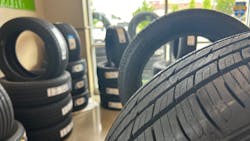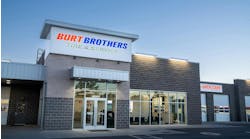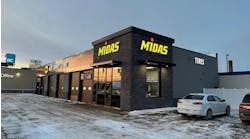The number of rooftops in our industry continues to rise. Month by month an increasing percentage of those rooftops transition from independently owned to private equity or big box ownership. As with every shift — of which there is no shortage at the moment — comes opportunity. If we peel back the roof of every tire and service business in operation today, knowing what we know about the shift in ownership, what do we see?
Throughout the 20+ years I've been fortunate to be in our business, I've been extremely excited to see a few shifts in strategy take shape. It's no secret that private equity- and big box-run locations have short term goals to return. Contrast that to a family run business, with more long term visions in mind, and it becomes more clear how vastly different the strategies within four walls really can be. For those on the outside — our customers — this takes six to 36 months to recognize. (It's not so apparent until a visit or two after a sale.) These two core strategic models have and will continue to work through market conditions significantly differently in the months and years to come.
Short returns on investment require fast action, bold moves and risk. Longer returns provide space for thoughtful planning and calculated moves aimed at mitigating risk. Fast action inherently delivers less consistency while thoughtful long-term planning has a better chance at stickiness.
In the past 12 years the 20 Group members I'm fortunate to journey with have worked towards a healthy tire-to-service mix of business. At the same time, heavier service shops have been very successful sticking to what they know — and they largely have left tires out of their business models. Times have and are changing here as well.
In large part, due to the aforementioned factors as well as miles driven, age of vehicle, technology and increased consumer demand for cradle to grave providers, here’s what we're seeing today. First, traditionally heavy tire mix shops have been doing a good job of finding and performing more service work. Where some of these shops used to have a 60% tire, 20% labor and 20% part mix, we now see many with a more balanced mix, let's say 40% tires with 30% labor and 30% parts.
We're also seeing those traditionally heavy-focused service shops that never concentrated on tires start to add tire sales to help bolster their heavy labor and part mix. They're looking to add car count and recognize tires are one of the best ways to do it.
Contrast that with the big/box and private equity models that tend to convert the shops they acquire to quick turn services with a heavy focus on top-end sales. This work has to go somewhere and likely lands in the hands of many independents.
The service/part mix in the tire and service industry is on the rise for a number of reasons. First, the average age of vehicles on the road is increasing, meaning that more vehicles need regular maintenance and repair. Second, consumers are becoming more educated about the importance of preventive maintenance, and they are more likely to take their vehicles to a qualified service center for regular checkups. Third, the tire and service industry is becoming more competitive, and businesses are looking for ways to differentiate themselves from the competition. One way to do this is to provide customers with a comprehensive vehicle inspection which naturally encourages tire dealers to offer a wider range of services.
As the service mix in the tire and service industry continues to grow, businesses in this industry will need to be prepared to adapt to the changing needs of consumers. They will need to offer a wide range of services, provide excellent customer service, and stay up to date on the latest trends in the industry.
The future of the tire and service industry is bright. As mix of business shifts within the various strategic models in the industry, and as consumers become more educated about the importance of preventive maintenance, businesses are continuing to innovate. The demand for these services will only continue to grow.
How will you leverage these shifts in mix?




